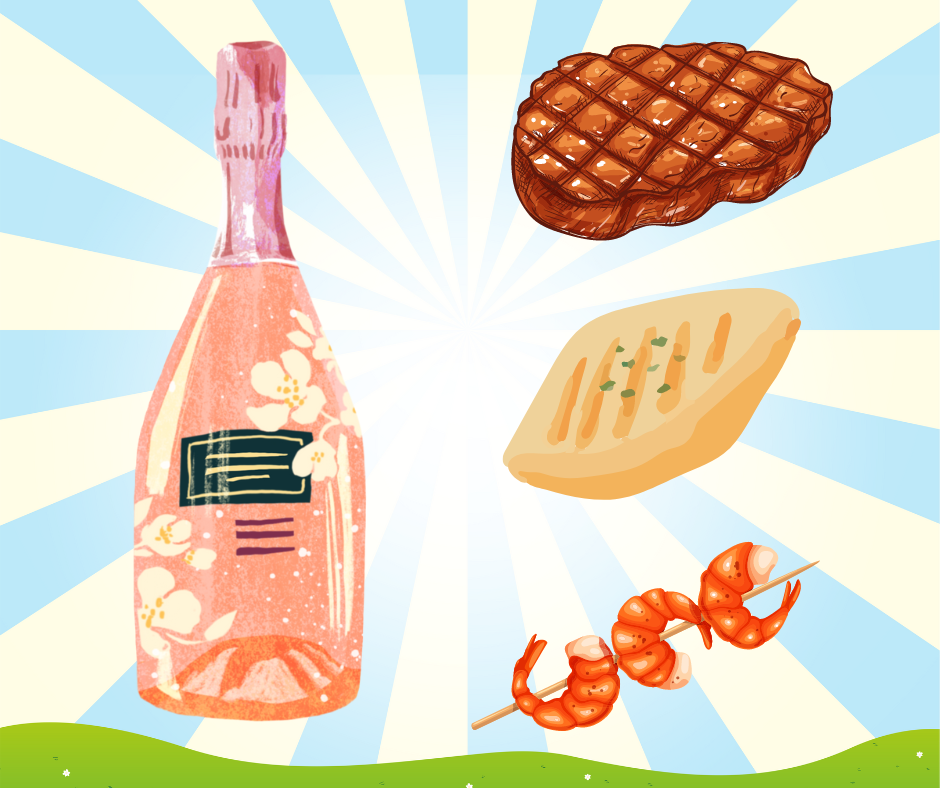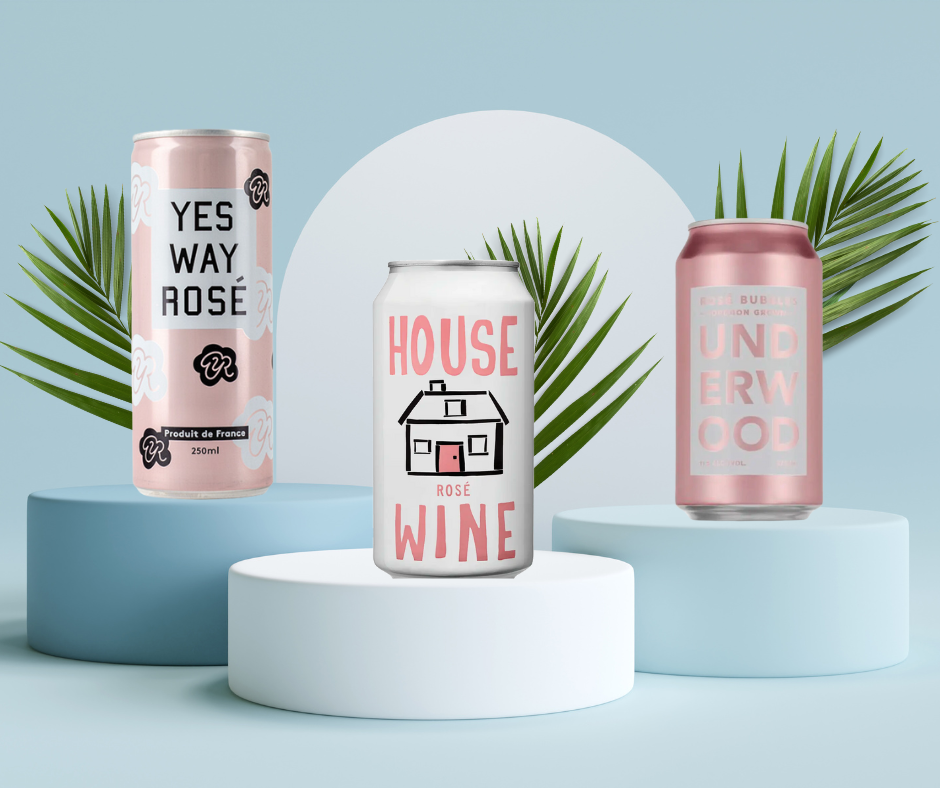
I’ve personally drank what I can assume is hundreds of glasses of rosé. I typically start in the spring (I’m an early-bird) and I set sail with it right until around Labor Day Weekend.
At this point, I find myself being pretty decent when trying to pick out a good rosé wine and while it’s certainly not rocket science (but then again, what really is?!) there are a few important things to think about when you’re trying to select the perfect bottle of rosé for yourself or if you’re gifting a bottle or two to someone else.
Below, I’ll walk you through some of the areas to focus in on, why they matter, and how to tell the difference.
Table of Contents
So, How Do You Really Choose a Good Bottle of Rosé?
I want to preference this as I do most of my reviews and helpful little tips, that so much of wine selection can be subjective. I’m not a wine snob around here and really think you should drink what you like. But if you want some pointers on what to focus in on, let’s get to it.
1.
Take a Look at the Color
Everyone may just assume that all rosés are the same color: pink. Alas, that’s not entirely true. A good rosé wine should have a vibrant, bright color. The shade of pink can vary depending on the grape variety and the overall winemaking process, but it should not be too pale or too dark.
If a rosé wine is too pale, it may lack flavor and body, while if it is too dark, it may be overly tannic and have a bitter taste.
Typically, the color of a rosé wine is determined by the amount of time the grape skins are left in contact with the juice during the winemaking process. A longer contact time will result in a darker color, while a shorter contact time will result in a lighter color.
A good rosé wine should strike a balance between these two extremes, with a color that is neither too pale nor too dark. This will typically result in a wine that has a pleasant, refreshing acidity and a light to medium body, with fruity and floral flavors. A well-balanced rosé wine is also more versatile when it comes to food pairings, making it a great choice to work with just about any summertime event you’re planning.
2.
Consider the Grape(s) Being Used
Rosés can be made from a variety of grapes, each with their own unique flavors and characteristics. For example, a rosé made from Grenache grapes will be fruitier and more full-bodied than one made from Pinot Noir grapes – for example.
Here’s a breakdown of some of the different grapes that are commonly used and what each one can mean in regards to taste, etc.
Grenache: Grenache is one of the most popular grape varieties used in the production of rosé wine, especially in France’s Provence region. It produces wines that are fruity and full-bodied, with flavors of strawberry, raspberry, and watermelon.
Pinot Noir: Pinot Noir is a red grape variety that can also be used to make rosé wines. Pinot Noir rosés tend to be lighter in color and body, with delicate flavors of red fruits and floral notes.
Syrah/Shiraz: Syrah, also known as Shiraz, is a red grape variety that is often used to make rich, full-bodied rosé wines. These wines can have flavors of blackberry, cherry, and spice, with a long finish.
Sangiovese: Sangiovese is a red grape variety that is widely grown in Italy. Sangiovese rosés tend to be light and refreshing, with flavors of strawberry, cherry, and citrus.
Tempranillo: Tempranillo is a red grape variety that is grown in Spain and is used to make rosés that are medium-bodied and have flavors of red fruits, with a slight herbal note.
Zinfandel: Zinfandel is a red grape variety that is grown in California and is often used to make rosé wines that are full-bodied and fruity, with flavors of raspberry, watermelon, and spice.
3.
Check the Origin of the Rosé
Different regions have their own styles and traditions when it comes to making rosé wine. For example, Provence in France is famous for producing light, crisp rosés, while those from Spain tend to be more full-bodied.
Here’s breakdown of some of the more popular regions and what it means in regards to the taste.
Provence, France: Provence is perhaps the most famous region for rosé wine production, and is known for producing light, dry rosés with pale pink colors. These wines typically have delicate flavors of red fruits, citrus, and herbs, with a crisp acidity and a refreshing finish.
Tavel, France: Tavel is a small appellation in the Rhône Valley region of France, and is known for producing rich, full-bodied rosé wines with deep pink colors. These wines can have flavors of raspberry, cherry, and spice, and often have a slightly higher alcohol content than other rosés.
Rioja, Spain: Rioja is a region in northern Spain that is known for its red wines, but also produces some excellent rosé wines. Rioja rosés tend to be medium-bodied and have flavors of strawberry, raspberry, and citrus, with a slight herbal note.
California, USA: California is a major producer of rosé wine, with a wide range of styles and grape varieties. California rosés can range from light and crisp to full-bodied and fruity, depending on the grape variety and winemaking style.
Mendoza, Argentina: Argentina is known for its red wines, but also produces some excellent rosé wines from Malbec grapes. These wines can have flavors of red fruits and floral notes, with a crisp acidity and a refreshing finish.
Veneto, Italy: Veneto is a region in northern Italy that is known for its sparkling rosé wines, particularly those made from the Prosecco grape. These wines can have flavors of strawberry, raspberry, and citrus, with a light, effervescent mouthfeel.
4.
Take a Look at the Vintage
Rosé wines are generally meant to be consumed young and fresh, so it’s important to check the vintage date.
Choose a recent vintage, ideally within the past two years, for the best flavor and freshness. This definitely isn’t a case of “the older the better.”
5.
Consider the "Sweetness Level" & Style
Rosé wines can range from dry to sweet, so it’s important to consider your personal preference. Dry rosés are more food-friendly, while sweeter styles can be enjoyed on their own as a dessert wine.
Here’s a breakdown of some of the more common styles to help you figure out which may be best for you.
Dry Rosé: Dry rosé is the most common style of rosé wine, and is made with minimal residual sugar. These wines are typically light and crisp, with flavors of red fruits, citrus, and sometimes herbs.
Sweet Rosé: Sweet rosé wines have a higher residual sugar content than dry rosés, giving them a sweeter taste. These wines can range from light and fruity to rich and dessert-like, depending on the winemaking process and grape variety used.
Sparkling Rosé: Sparkling rosé wines can be made using various methods, including the traditional Champagne method or the tank method. These wines can be dry or sweet, and are typically light and effervescent, with flavors of red fruits and citrus.
Blush Rosé: Blush rosé wines are typically lighter in color than other rosés, and have a subtle pink or peach hue. These wines can be dry or sweet, and are typically light and fruity, with delicate flavors of red fruits and sometimes floral notes.
Vin Gris: Vin Gris is a style of rosé wine that is made using a minimal amount of grape skin contact, resulting in a pale pink color. These wines can be dry or slightly sweet, and are typically light and crisp, with flavors of red fruits and citrus.
Saignée Rosé: Saignée rosé is made using the “bleeding” method, which involves removing some of the juice from a vat of red wine during fermentation, resulting in a lighter-colored wine. These wines can be rich and full-bodied, with flavors of red fruits, spice, and sometimes a slight tannic structure.
In Conclusion
Overall, a good rosé wine should be well-balanced, with a refreshing acidity, fruit-forward flavors, and a clean finish. It should also pair well with a variety of foods, making it a versatile choice for any occasion.
Again, this can all come down to your own palate, preferences, and what you’re into flavor-wise. Hopefully the above mentioned tips and tricks will help you pick out a really good bottle and may even help you choose one that you may have never even considered buying before.
Resources
While I do consider myself a rosé connoisseur, I did consult with a few pros in this space, especially when it came to some of the more obscure stats. A special shoutout to the following:
All of the above are great resources, especially when it comes to just about anything food and drink related. Give them a look for just about any of your drinking or cooking needs!
There are some additional resources for you, especially when it comes to informational help. Check out some of our additional articles you may find helpful like: how to hold a wine glass, learn the difference of champagne vs. prosecco, our review of the YETI wine glass, and some pretty decent canned rosés to try out.






